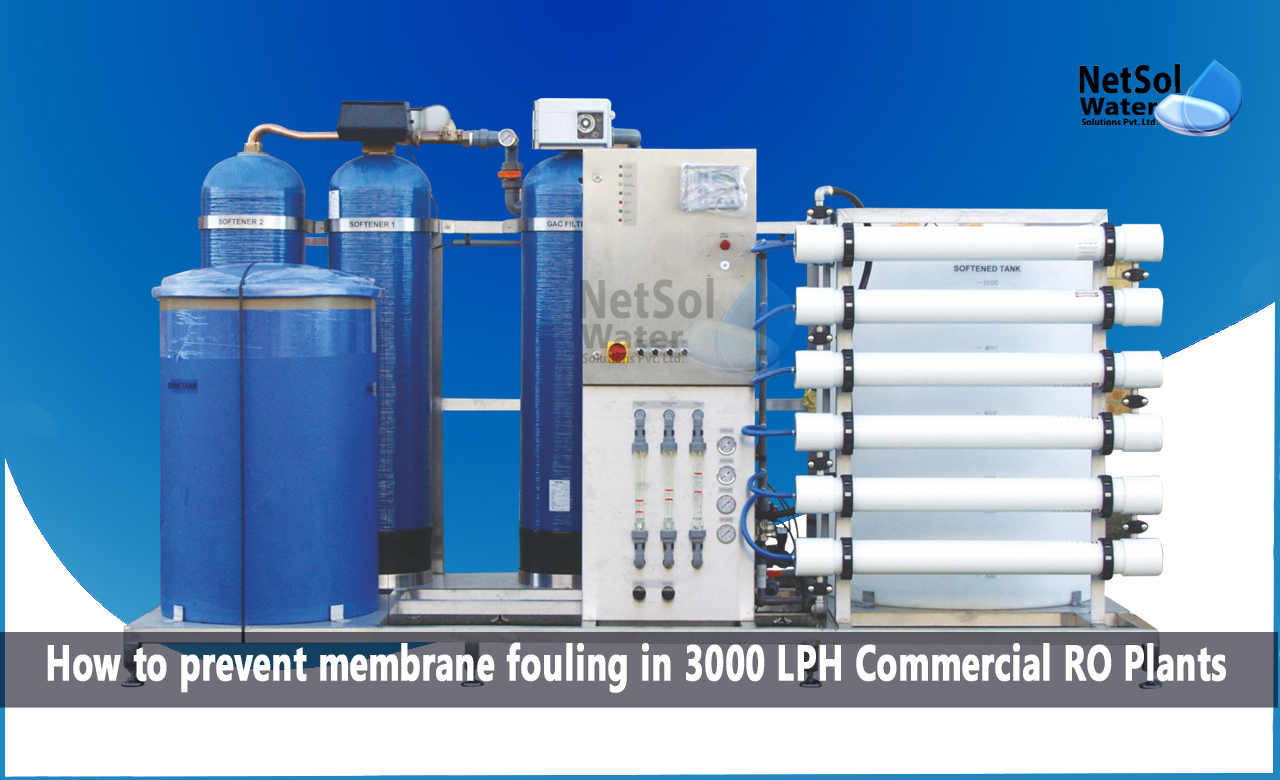How to prevent membrane fouling in 3000 LPH Commercial RO Plants?
Membrane fouling is a common problem that can occur in 3000 LPH commercial RO plants. Fouling occurs when contaminants in the feedwater build up on the surface of the membrane, reducing its efficiency and lifespan. The buildup of fouling can lead to reduced product water quality, increased operating costs, and even permanent damage to the membrane. Therefore, preventing membrane fouling is essential for the optimal performance and longevity of the RO plant.
In this blog, we will discuss how to prevent membrane fouling in 3000 LPH commercial RO plants. We will explore various methods of preventing fouling, including pre-treatment, cleaning, pH control, temperature control, and monitoring. By implementing these measures, operators can prolong the life of the membrane and ensure that the plant is operating efficiently and effectively.
Let's dive into these methods in more detail.
1- Pre-treatment
Pre-treatment is one of the most effective ways to prevent membrane fouling. Pre-treatment methods include physical, chemical, and biological methods to remove suspended solids, organic matter, and other contaminants in the feedwater. Some common pre-treatment methods include sedimentation, filtration, and disinfection. Pre-treatment can help reduce the load on the membrane and prevent fouling.
2- Cleaning
Regular cleaning of the membrane is essential to prevent fouling. Cleaning should be performed on a regular basis, depending on the level of fouling and the operating conditions of the plant. The cleaning method will depend on the type of fouling, and different types of fouling may require different cleaning methods. Common cleaning methods include backwashing, chemical cleaning, and physical cleaning.
3- pH Control
pH control is another effective way to prevent membrane fouling. Maintaining a suitable pH range can help prevent the precipitation of dissolved salts and other contaminants on the membrane surface. The recommended pH range for RO feedwater is between 6.5 and 7.5. If the pH is too low or too high, it can lead to fouling, and the membrane's performance will be reduced.
4- Temperature Control
Temperature control is critical to prevent membrane fouling. High temperatures can increase the growth of bacteria and other microorganisms, leading to biofouling. Biofouling occurs when microorganisms colonize the surface of the membrane and form a biofilm. Biofouling can be prevented by maintaining the feedwater temperature below 35°C.
5- Monitoring
Monitoring the performance of the RO plant is essential to prevent fouling. Regular monitoring of parameters such as feedwater quality, pressure, flow rate, and product water quality can help identify potential problems before they become significant issues. By monitoring these parameters, operators can take corrective action before fouling occurs, preventing membrane damage and reducing operating costs.
Conclusion:
In conclusion, preventing membrane fouling in 3000 LPH commercial RO plants is essential to ensure the plant's optimal performance and reduce operating costs. Pre-treatment, cleaning, pH control, temperature control, and monitoring are effective ways to prevent fouling. By implementing these measures, operators can prolong the life of the membrane and ensure that the plant is operating efficiently and effectively.
For any other support, inquiries, or product purchases, call on +91-9650608473 or email at enquiry@netsolwater.com



